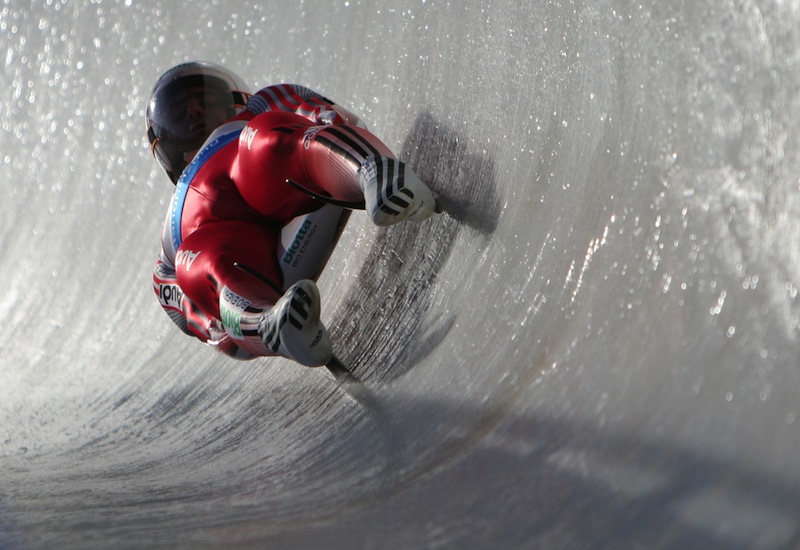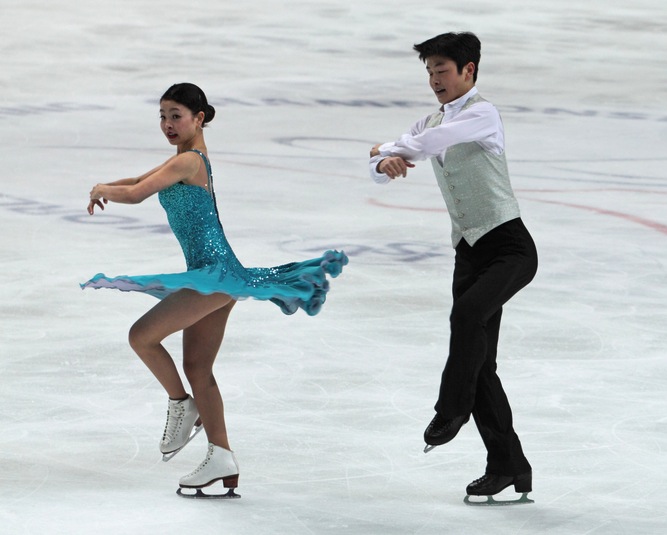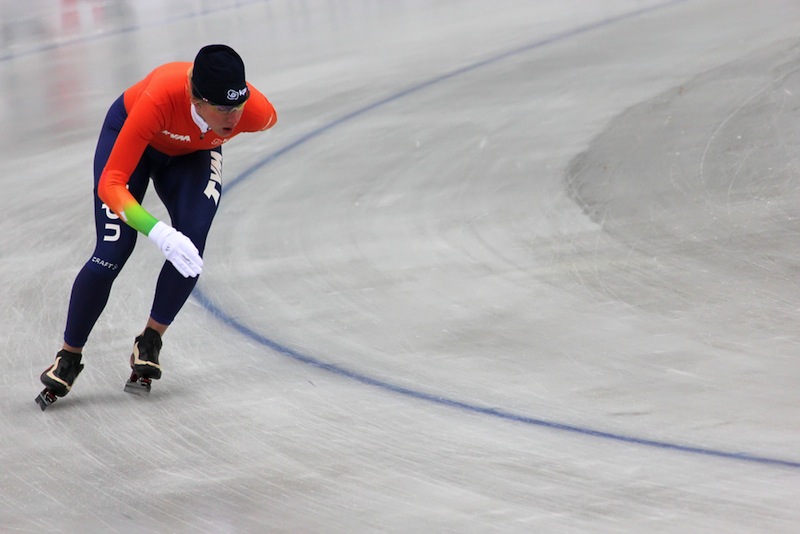Winter Olympic Athletes: Who Is Fittest?

The Winter Olympics boast a wide variety of sports, from rather sedate-looking curling to fast-and-furious speed skating. So is one type of athlete fitter than another?
It's hard to say. Olympic athletes are, as a rule, mind-bogglingly fit. Many Olympic athletes train for up to seven hours a day. But what fitness means depends on the sport. A bobsledder has the strength and power to push a 400-lb. (180 kilograms) sled as fast as possible for about five seconds; a cross-country skier has the endurance to glide for up to 9 miles (15 kilometers). It's impossible to say one is fitter than the other, sports physiologists and trainers agree.
Fitness "is like art and beauty," said Carl Foster, a professor of exercise and sports science at the University of Wisconsin–La Crosse. "Everybody sort of knows what it is when they see it, but defining it is pretty difficult."
Picking from the menu
The textbook definition of fitness usually describes a menu of five components: cardiovascular endurance, muscular endurance, muscular strength, flexibility and body composition (the ratio of fat to muscle), Foster told Live Science.
For someone who is not an Olympic athlete, a good balance of these components marks fitness. But athletes are specialists, said Foster, who worked with the U.S. Olympic speed-skating team from 1979 to 2002. These athletes train the aspects of fitness they most need for their sport, he said.
Bobsledders, skeleton athletes and lugers are all "sprinters on ice," said Brad DeWeese, a professor of kinesiology, leisure and sports studies at East Tennessee State University and the strength, speed and conditioning coach for nine athletes and two alternates traveling to the Sochi Games. They train for muscular strength so they'll be able to accelerate quickly and build the momentum they need to get downhill quickly. Cardiovascular endurance is less important for this sport.
Sign up for the Live Science daily newsletter now
Get the world’s most fascinating discoveries delivered straight to your inbox.
Cross-country skiers and biathletes, who compete in endurance-based challenges, use strength training to reduce fatigue, but their main focus is aerobic exercise to build cardiovascular endurance, DeWeese told Live Science. [11 Surprising Facts About the Circulatory System]

In contrast, athletes like figure skaters and downhill skiers might have a more balanced regimen, as they need endurance to complete long events, as well as the strength and flexibility to handle jumps and landings, said Ambrose Serrano, head strength and conditioning coach for the U.S. Olympic Committee at the Lake Placid, N.Y., Olympic Training Center.
These athletes may even vary on a cellular level. When a person strength trains, his or her messenger RNA, the molecule that translates DNA instructions inside the cell, alters its signal, calling for the creation of stronger, faster muscle cells, DeWeese said.
Olympic performance
Tiny time or performance differences can make or break an Olympic competitor. In bobsled, the difference between taking home gold and not standing on the podium could come down to a few hundredths of a second, Serrano said. And the gap between a gold medalist in speed skating and no medal at all is a mere 1.3 percent difference in time on average, Foster said. The difference between gold and silver in speed skating is only three-tenths of a percent of the time to complete the race.

For context, the difference in an average person's athletic performance in sports physiology tests varies by at least 5 percent from day to day, Foster said.
The average person with a 9-to-5 job may never reach Olympic heights, but they don't have to: 30 minutes of moderate activity most days of the week is enough to do wonders for the body, reducing the risk for cancer, heart disease, diabetes — "the big stuff that kills everyone now," Foster said.
"The big things happen early," he said. "That's the good news."
Adding time and intensity improves fitness, Foster said, but the curve has diminishing returns. Olympians train six or seven hours a day, because a gain of one-hundredth of a second could mean everything; for weekend warriors, that kind of fixation would be overkill.
But average people can learn something from their Olympic heroes. From curlers to bobsledders to figure skaters, all Olympians regularly hit the weight room. Strength training prevents injuries and underpins the other aspects of fitness, said Scott Caulfield, the head strength coach at the National Strength and Conditioning Association and for the Colorado College hockey team. That's especially true as people age, he said.
"That's where people see a decline in their abilities, is once they've lost strength," Caulfield told Live Science.
Follow Stephanie Pappas on Twitter and Google+. Follow us @livescience, Facebook & Google+. Original article on Live Science.

Stephanie Pappas is a contributing writer for Live Science, covering topics ranging from geoscience to archaeology to the human brain and behavior. She was previously a senior writer for Live Science but is now a freelancer based in Denver, Colorado, and regularly contributes to Scientific American and The Monitor, the monthly magazine of the American Psychological Association. Stephanie received a bachelor's degree in psychology from the University of South Carolina and a graduate certificate in science communication from the University of California, Santa Cruz.









